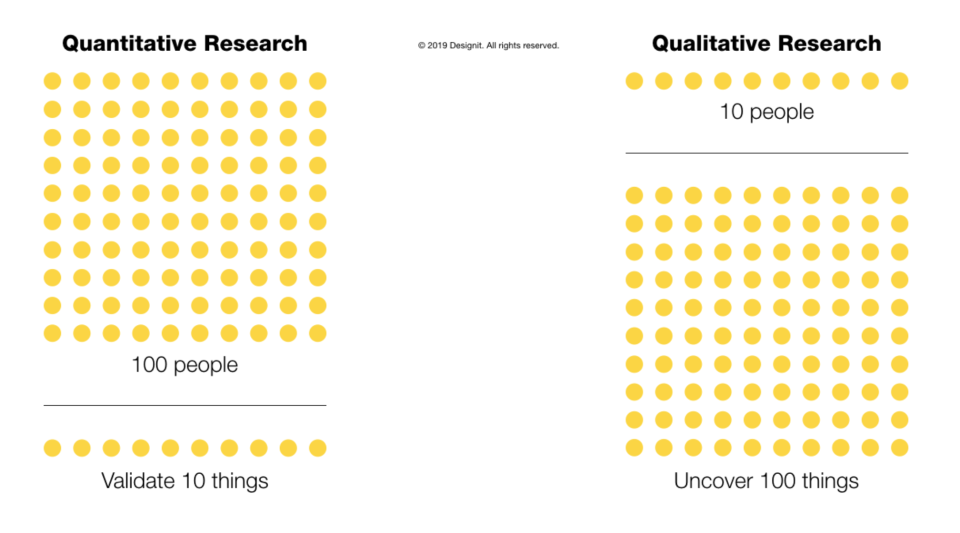User Testing: Qualitative vs. Quantitative by Miriam Manso on August 15, 2019
1 Min Read

Summary
Qualitative and quantitative user testing are complementary methods that serve different goals. Both are essential in the iterative design cycle, but they are very different from each other.
For example, the qualitative test consists of observational findings that identify design features easy or hard to use while quantitative studies allow us to put a number on a redesign and clearly say how much our new version improved over the old one. They are the essential instrument in calculating return on investment (ROI).

Goals
- Qualitative: inform design decision, identify usability issues and find solutions for them
- Quantitative: evaluate the usability of an existing site, track usability over time, compare different sites, compute ROI.
Outcomes
- Qualitative: findings based on the researcher’s impressions, interpretations, and prior knowledge.
- Quantitative: statistically meaningful results that are likely to be replicated in a different study.
Takeaway
- Qual data typically gathered directly by observing the user and usually will consist of a set of findings, which identify (and prioritize according to severity) the strengths and weaknesses of a design. Data analysis will not be mathematical.
- Quant studies usually involve a relatively large number of users. These studies will include information about the statistical significance of the results.
- Some use “qualitative” to only refer to open text answers in surveys, but it actually contains a diverse range of methods.


